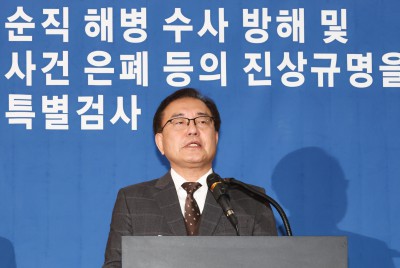Semiannual Monetary Policy Report to the Congress
Before the Committee on Financial Services, U.S. House of Representatives
February 27, 2008
Chairman Frank, Ranking Member Bachus, and other members of the Committee, I am pleased to present the Federal Reserve's Monetary Policy Report to the Congress. In my testimony this morning I will briefly review the economic situation and outlook, beginning with developments in real activity and inflation, then turn to monetary policy. I will conclude with a quick update on the Federal Reserve's recent actions to help protect consumers in their financial dealings.
The economic situation has become distinctly less favorable since the time of our July report. Strains in financial markets, which first became evident late last summer, have persisted; and pressures on bank capital and the continued poor functioning of markets for securitized credit have led to tighter credit conditions for many households and businesses. The growth of real gross domestic product (GDP) held up well through the third quarter despite the financial turmoil, but it has since slowed sharply. Labor market conditions have similarly softened, as job creation has slowed and the unemployment rate--at 4.9 percent in January--has moved up somewhat.
Many of the challenges now facing our economy stem from the continuing contraction of the U.S. housing market. In 2006, after a multiyear boom in residential construction and house prices, the housing market reversed course. Housing starts and sales of new homes are now less than half of their respective peaks, and house prices have flattened or declined in most areas. Changes in the availability of mortgage credit amplified the swings in the housing market. During the housing sector's expansion phase, increasingly lax lending standards, particularly in the subprime market, raised the effective demand for housing, pushing up prices and stimulating construction activity. As the housing market began to turn down, however, the slump in subprime mortgage originations, together with a more general tightening of credit conditions, has served to increase the severity of the downturn. Weaker house prices in turn have contributed to the deterioration in the performance of mortgage-related securities and reduced the availability of mortgage credit.
The housing market is expected to continue to weigh on economic activity in coming quarters. Homebuilders, still faced with abnormally high inventories of unsold homes, are likely to cut the pace of their building activity further, which will subtract from overall growth and reduce employment in residential construction and closely related industries.
Consumer spending continued to increase at a solid pace through much of the second half of 2007, despite the problems in the housing market, but it appears to have slowed significantly toward the end of the year. The jump in the price of imported energy, which eroded real incomes and wages, likely contributed to the slowdown in spending, as did the declines in household wealth associated with the weakness in house prices and equity prices. Slowing job creation is yet another potential drag on household spending, as gains in payroll employment averaged little more than 40,000 per month during the three months ending in January, compared with an average increase of almost 100,000 per month over the previous three months. However, the recently enacted fiscal stimulus package should provide some support for household spending during the second half of this year and into next year.
The business sector has also displayed signs of being affected by the difficulties in the housing and credit markets. Reflecting a downshift in the growth of final demand and tighter credit conditions for some firms, available indicators suggest that investment in equipment and software will be subdued during the first half of 2008. Likewise, after growing robustly through much of 2007, nonresidential construction is likely to decelerate sharply in coming quarters as business activity slows and funding becomes harder to obtain, especially for more speculative projects. On a more encouraging note, we see few signs of any serious imbalances in business inventories aside from the overhang of unsold homes. And, as a whole, the nonfinancial business sector remains in good financial condition, with strong profits, liquid balance sheets, and corporate leverage near historical lows.
In addition, the vigor of the global economy has offset some of the weakening of domestic demand. U.S. real exports of goods and services increased at an annual rate of about 11 percent in the second half of last year, boosted by continuing economic growth abroad and the lower foreign exchange value of the dollar. Strengthening exports, together with moderating imports, have in turn led to some improvement in the U.S. current account deficit, which likely narrowed in 2007 (on an annual basis) for the first time since 2001. Although recent indicators point to some slowing of foreign economic growth, U.S. exports should continue to expand at a healthy pace in coming quarters, providing some impetus to domestic economic activity and employment.
As I have mentioned, financial markets continue to be under considerable stress. Heightened investor concerns about the credit quality of mortgages, especially subprime mortgages with adjustable interest rates, triggered the financial turmoil. However, other factors, including a broader retrenchment in the willingness of investors to bear risk, difficulties in valuing complex or illiquid financial products, uncertainties about the exposures of major financial institutions to credit losses, and concerns about the weaker outlook for economic growth, have also roiled the financial markets in recent months. To help relieve the pressures in the market for interbank lending, the Federal Reserve--among other actions--recently introduced a term auction facility (TAF), through which prespecified amounts of discount window credit are auctioned to eligible borrowers, and we have been working with other central banks to address market strains that could hamper the achievement of our broader economic objectives. These efforts appear to have contributed to some improvement in short-term funding markets. We will continue to monitor financial developments closely.
As part of its ongoing commitment to improving the accountability and public understanding of monetary policy making, the Federal Open Market Committee (FOMC) recently increased the frequency and expanded the content of the economic projections made by Federal Reserve Board members and Reserve Bank presidents and released to the public. The latest economic projections, which were submitted in conjunction with the FOMC meeting at the end of January and which are based on each participant's assessment of appropriate monetary policy, show that real GDP was expected to grow only sluggishly in the next few quarters and that the unemployment rate was seen as likely to increase somewhat. In particular, the central tendency of the projections was for real GDP to grow between 1.3 percent and 2.0 percent in 2008, down from 2-1/2 percent to 2-3/4 percent projected in our report last July. FOMC participants' projections for the unemployment rate in the fourth quarter of 2008 have a central tendency of 5.2 percent to 5.3 percent, up from the level of about 4-3/4 percent projected last July for the same period. The downgrade in our projections for economic activity in 2008 since our report last July reflects the effects of the financial turmoil on real activity and a housing contraction that has been more severe than previously expected. By 2010, our most recent projections show output growth picking up to rates close to or a little above its longer-term trend and the unemployment rate edging lower; the improvement reflects the effects of policy stimulus and an anticipated moderation of the contraction in housing and the strains in financial and credit markets. The incoming information since our January meeting continues to suggest sluggish economic activity in the near term.
The risks to this outlook remain to the downside. The risks include the possibilities that the housing market or labor market may deteriorate more than is currently anticipated and that credit conditions may tighten substantially further.
Consumer price inflation has increased since our previous report, in substantial part because of the steep run-up in the price of oil. Last year, food prices also increased significantly, and the dollar depreciated. Reflecting these influences, the price index for personal consumption expenditures (PCE) increased 3.4 percent over the four quarters of 2007, up from 1.9 percent in 2006. Core price inflation--that is, inflation excluding food and energy prices--also firmed toward the end of the year. The higher recent readings likely reflected some pass-through of energy costs to the prices of core consumer goods and services as well as the effect of the depreciation of the dollar on import prices. Moreover, core inflation in the first half of 2007 was damped by a number of transitory factors--notably, unusually soft prices for apparel and for financial services--which subsequently reversed. For the year as a whole, however, core PCE prices increased 2.1 percent, down slightly from 2006.
The projections recently submitted by FOMC participants indicate that overall PCE inflation was expected to moderate significantly in 2008, to between 2.1 percent and 2.4 percent (the central tendency of the projections). A key assumption underlying those projections was that energy and food prices would begin to flatten out, as was implied by quotes on futures markets. In addition, diminishing pressure on resources is also consistent with the projected slowing in inflation. The central tendency of the projections for core PCE inflation in 2008, at 2.0 percent to 2.2 percent, was a bit higher than in our July report, largely because of some higher-than-expected recent readings on prices. Beyond 2008, both overall and core inflation were projected to edge lower, as participants expected inflation expectations to remain reasonably well-anchored and pressures on resource utilization to be muted. The inflation projections submitted by FOMC participants for 2010--which ranged from 1.5 percent to 2.0 percent for overall PCE inflation--were importantly influenced by participants' judgments about the measured rates of inflation consistent with the Federal Reserve's dual mandate and about the time frame over which policy should aim to attain those rates.
The rate of inflation that is actually realized will of course depend on a variety of factors. Inflation could be lower than we anticipate if slower-than-expected global growth moderates the pressure on the prices of energy and other commodities or if rates of domestic resource utilization fall more than we currently expect. Upside risks to the inflation projection are also present, however, including the possibilities that energy and food prices do not flatten out or that the pass-through to core prices from higher commodity prices and from the weaker dollar may be greater than we anticipate. Indeed, the further increases in the prices of energy and other commodities in recent weeks, together with the latest data on consumer prices, suggest slightly greater upside risks to the projections of both overall and core inflation than we saw last month. Should high rates of overall inflation persist, the possibility also exists that inflation expectations could become less well anchored. Any tendency of inflation expectations to become unmoored or for the Fed's inflation-fighting credibility to be eroded could greatly complicate the task of sustaining price stability and could reduce the flexibility of the FOMC to counter shortfalls in growth in the future. Accordingly, in the months ahead, the Federal Reserve will continue to monitor closely inflation and inflation expectations.
Let me turn now to the implications of these developments for monetary policy. The FOMC has responded aggressively to the weaker outlook for economic activity, having reduced its target for the federal funds rate by 225 basis points since last summer. As the Committee noted in its most recent post-meeting statement, the intent of those actions has been to help promote moderate growth over time and to mitigate the risks to economic activity.
A critical task for the Federal Reserve over the course of this year will be to assess whether the stance of monetary policy is properly calibrated to foster our mandated objectives of maximum employment and price stability in an environment of downside risks to growth, stressed financial conditions, and inflation pressures. In particular, the FOMC will need to judge whether the policy actions taken thus far are having their intended effects. Monetary policy works with a lag. Therefore, our policy stance must be determined in light of the medium-term forecast for real activity and inflation as well as the risks to that forecast. Although the FOMC participants' economic projections envision an improving economic picture, it is important to recognize that downside risks to growth remain. The FOMC will be carefully evaluating incoming information bearing on the economic outlook and will act in a timely manner as needed to support growth and to provide adequate insurance against downside risks.
Finally, I would like to say a few words about the Federal Reserve's recent actions to protect consumers in their financial transactions. In December, following up on a commitment I made at the time of our report last July, the Board issued for public comment a comprehensive set of new regulations to prohibit unfair or deceptive practices in the mortgage market, under the authority granted us by the Home Ownership and Equity Protection Act of 1994. The proposed rules would apply to all mortgage lenders and would establish lending standards to help ensure that consumers who seek mortgage credit receive loans whose terms are clearly disclosed and that can reasonably be expected to be repaid. Accordingly, the rules would prohibit lenders from engaging in a pattern or practice of making higher-priced mortgage loans without due regard to consumers' ability to make the scheduled payments. In each case, a lender making a higher-priced loan would have to use third-party documents to verify the income relied on to make the credit decision. For higher-priced loans, the proposed rules would require the lender to establish an escrow account for the payment of property taxes and homeowners' insurance and would prevent the use of prepayment penalties in circumstances where they might trap borrowers in unaffordable loans. In addition, for all mortgage loans, our proposal addresses misleading and deceptive advertising practices, requires borrowers and brokers to agree in advance on the maximum fee that the broker may receive, bans certain practices by servicers that harm borrowers, and prohibits coercion of appraisers by lenders. We expect substantial public comment on our proposal, and we will carefully consider all information and viewpoints while moving expeditiously to adopt final rules.
The effectiveness of the new regulations, however, will depend critically on strong enforcement. To that end, in conjunction with other federal and state agencies, we are conducting compliance reviews of a range of mortgage lenders, including nondepository lenders. The agencies will collaborate in determining the lessons learned and in seeking ways to better cooperate in ensuring effective and consistent examinations of, and improved enforcement for, all categories of mortgage lenders.
The Federal Reserve continues to work with financial institutions, public officials, and community groups around the country to help homeowners avoid foreclosures. We have called on mortgage lenders and servicers to pursue prudent loan workouts and have supported the development of streamlined, systematic approaches to expedite the loan modification process. We also have been providing community groups, counseling agencies, regulators, and others with detailed analyses to help identify neighborhoods at high risk from foreclosures so that local outreach efforts to help troubled borrowers can be as focused and effective as possible. We are actively pursuing other ways to leverage the Federal Reserve's analytical resources, regional presence, and community connections to address this critical issue.
In addition to our consumer protection efforts in the mortgage area, we are working toward finalizing rules under the Truth in Lending Act that will require new, more informative, and consumer-tested disclosures by credit card issuers. Separately, we are actively reviewing potentially unfair and deceptive practices by issuers of credit cards. Using the Board's authority under the Federal Trade Commission Act, we expect to issue proposed rules regarding these practices this spring.
Thank you. I would be pleased to take your questions.

























